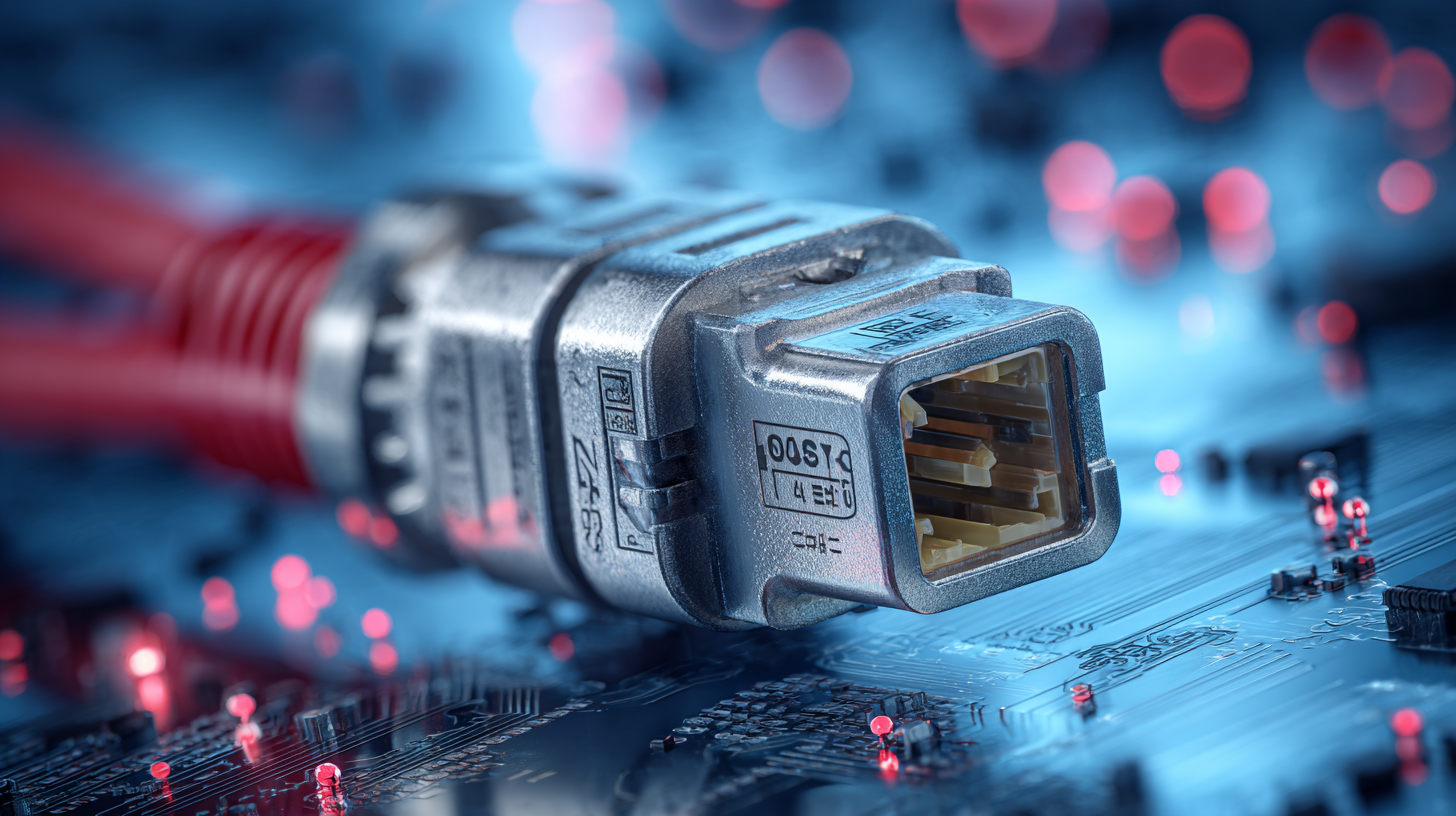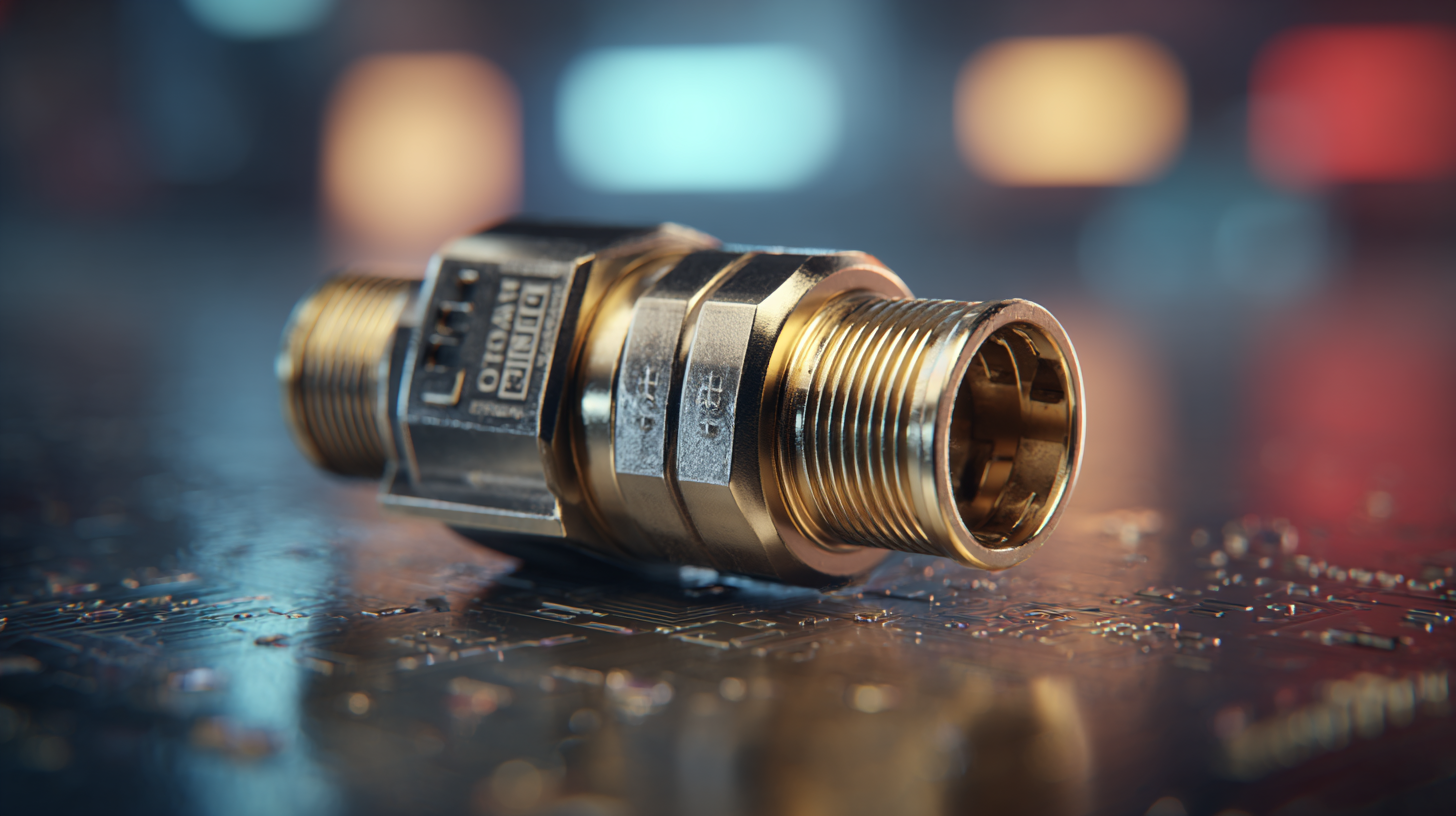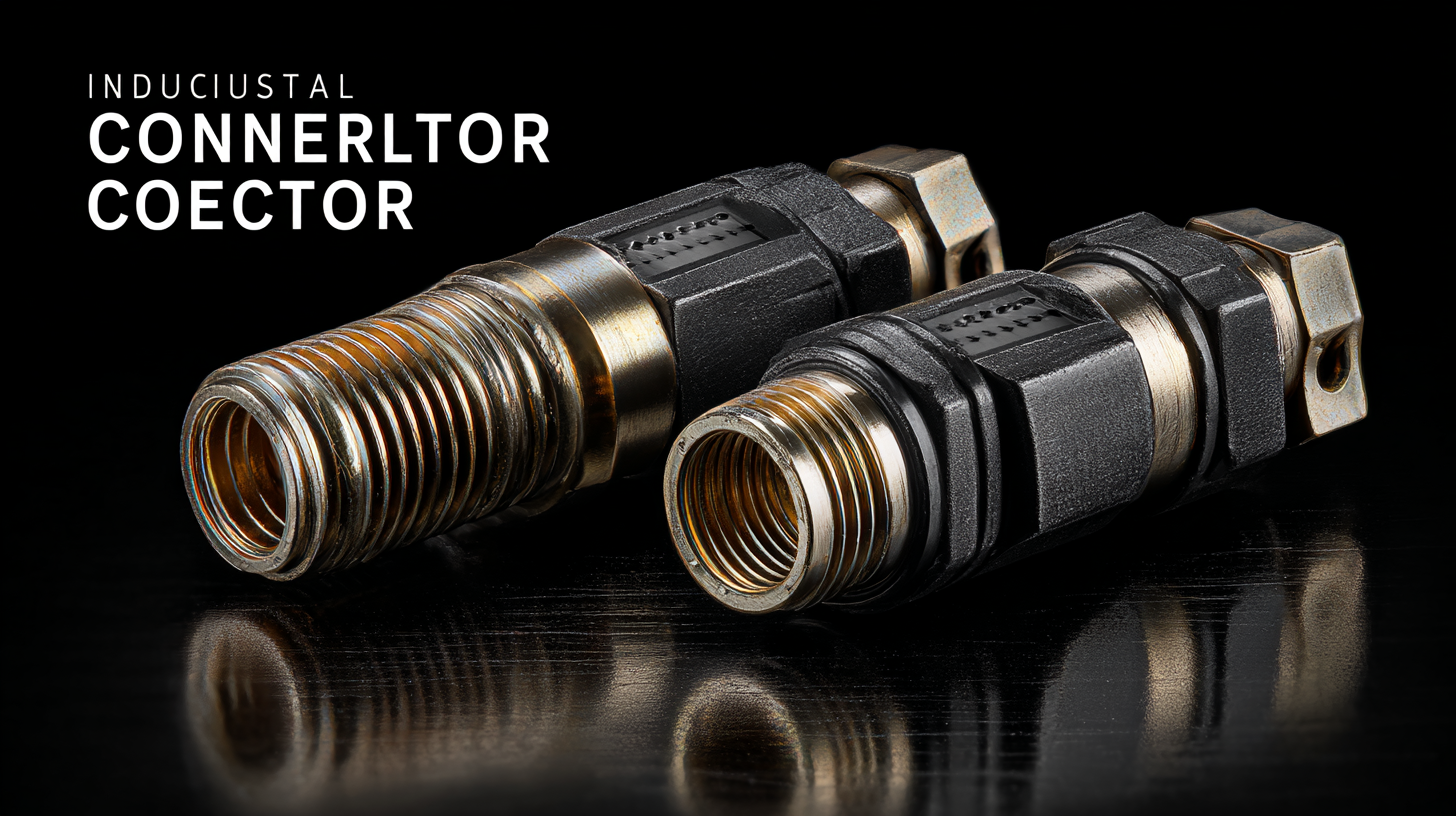


In the rapidly evolving landscape of manufacturing and automation, the selection of the right Industrial Connector is crucial for operational success and efficiency. As we approach 2025, understanding the latest trends in industrial connectivity becomes paramount for businesses looking to stay competitive. This blog serves as a comprehensive guide, offering a checklist that outlines the key considerations when choosing industrial connectors that best meet your specific requirements.

From advancements in technology to the increasing emphasis on sustainability, this guide will help you navigate the myriad of options available. By exploring these trends and using the checklist provided, you’ll be equipped to make informed decisions that not only enhance your connectivity solutions but also align with your business goals in the coming years.
Industrial connectors play a pivotal role in modern business applications, serving as the backbone of seamless communication and energy transfer between various components in manufacturing and automation systems. In an era where businesses are increasingly reliant on interconnected technologies, the significance of choosing the right industrial connectors cannot be overstated. They ensure reliability and efficiency in operations, minimize downtime, and enhance overall system performance, which is critical in competitive markets.
As technology advances, the requirements for industrial connectors are evolving too. Businesses must consider factors such as environmental resistance, data transmission capabilities, and compatibility with existing systems. With the rise of Industry 4.0, where IoT and smart devices are commonplace, connectors that facilitate high-speed data transfer and robust connectivity become essential. Companies must thoroughly evaluate their operational needs and future scalability when selecting connectors to guarantee that their investments are aligned with their long-term strategic goals.

As we look toward 2025, several key trends are shaping the landscape of industrial connectors, essential components that facilitate communication and power distribution in various industries. One significant trend is the increasing demand for automation and smart manufacturing solutions. As factories evolve into highly digitized environments, connectors must provide greater reliability and enhanced performance to support the rapid exchange of data among machines, sensors, and control systems. This shift necessitates connectors that not only withstand harsh industrial conditions but also offer advanced features such as increased bandwidth and improved thermal management.
Another important trend is the push for sustainability across industrial operations. Manufacturers are now prioritizing eco-friendly materials and designs that minimize environmental impact. In response, connector suppliers are innovating by developing recyclable materials and energy-efficient designs that align with circular economy principles. Additionally, there is a growing focus on modular and customizable connectors enabling businesses to adapt more flexibly to changing production requirements. This adaptability is essential for companies aiming to stay competitive in a fast-evolving market. As these trends continue to develop, businesses must stay informed to select the optimal connector solutions that meet their future needs.
When selecting industrial connectors for your operations, several key factors must be considered to ensure optimal performance and reliability. First and foremost, the specific application requirements play a critical role. Different industries, such as aerospace and defense, often necessitate military-grade connectors that can withstand rigorous environments and meet strict safety standards. This is particularly relevant as companies expand their connector offerings to cater to the unique demands of these sectors.
Another significant consideration is the compatibility of connectors with existing systems. As technology advances, choosing connectors that can seamlessly integrate with contemporary equipment is essential. Evaluating the physical characteristics, such as size and design, alongside the electrical and environmental specifications, will help businesses avoid potential operational inefficiencies. Additionally, exploring options for customization and future scalability can provide long-term advantages, ensuring that your connector solutions remain relevant as your business evolves.
When considering industrial connectors, it is essential to understand the various types and their specific applications in order to choose the best options for your business. Common types include circular connectors, rectangular connectors, and custom-designed connectors, each serving unique functions in different industries. For instance, circular connectors often provide secure connections in high-vibration environments, making them ideal for automotive and aerospace applications. In contrast, rectangular connectors are frequently utilized in data communication settings due to their compact size and efficient design.
Emerging technologies such as 3D printing are also influencing the landscape of industrial connectors. Recent studies demonstrate that innovative printing techniques can create customized connectors tailored for specific applications, enhancing both performance and efficiency. Moreover, as the connector market continues to expand, reaching projected values of $141.1 billion by 2032, understanding the nuances between different connector types becomes increasingly important for businesses aiming to optimize their operations in an ever-evolving technological landscape. Adopting the right connectors can lead to improved reliability and a competitive edge in the market.
| Connector Type | Material | Temperature Range (°C) | Current Rating (A) | Common Applications |
|---|---|---|---|---|
| Circular Connectors | Aluminum/Plastic | -40 to 85 | < 20 | Automation, Robotics |
| Rectangular Connectors | Plastic | -20 to 105 | < 30 | Industrial Machinery |
| Fieldbus Connectors | Plastic/Metal | -40 to 85 | < 16 | Data Communication in Automation |
| Power Connectors | Copper/Plastic | -20 to 125 | > 60 | Heavy Machinery, Power Supply Systems |
| Fiber Optic Connectors | Plastic/Glass | -40 to 85 | N/A | Telecommunications, Data Centers |
 When it comes to industrial connectors, maintenance is crucial for ensuring long-lasting performance and reliability. Regular inspections should be performed to identify any signs of wear or damage, such as frayed cables or corroded terminals. Cleaning connectors with appropriate materials can help prevent dirt and debris from compromising their effectiveness. It’s also essential to ensure that connectors are properly seated and secure to avoid accidental disconnection, which can lead to downtime and increased operational costs.
When it comes to industrial connectors, maintenance is crucial for ensuring long-lasting performance and reliability. Regular inspections should be performed to identify any signs of wear or damage, such as frayed cables or corroded terminals. Cleaning connectors with appropriate materials can help prevent dirt and debris from compromising their effectiveness. It’s also essential to ensure that connectors are properly seated and secure to avoid accidental disconnection, which can lead to downtime and increased operational costs.
Implementing best practices for the handling and storage of industrial connectors can further enhance their lifespan. Proper labeling and organization of connectors can prevent mix-ups and facilitate easy access during maintenance tasks. Additionally, using protective covers when connectors are not in use can shield them from environmental factors such as moisture and dust. Training employees on the importance of connector care will foster a culture of diligence, ensuring that all team members understand the impact of maintenance on overall equipment performance. By focusing on these practices, businesses can maximize the investment in their industrial connectors and maintain seamless operations.
